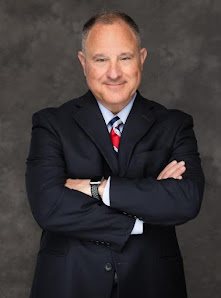The Washington Post began tracking fatal shootings by on-duty police officers in 2015, the year after a White officer in Ferguson, Mo., shot and killed a Black 18-year old. Over the past six years, officers have fatally shot more than 6,400 people, an average of nearly a thousand a year, or almost three each day. The yearly toll even reached a new high of 1,021 fatal shootings in 2020. Midway through this year, fatal police shootings are down compared with the same period last year. They have fluctuated month to month since the project began, ending near 1,000 annually.
Since Ferguson, departments across the country have taken
steps toward reform, but these efforts have been inconsistent and incomplete.
Most police departments still do not use body cameras. Experts in law
enforcement and criminal justice say there have not been the large-scale policy
or legal shifts that might reduce uses of force. And sending mental health
teams in response to people in crisis, alongside or instead of armed officers,
remains the exception.
The fatal shootings range from what experts describe as the
unavoidable — including officers coming under gunfire — to a handful that
prosecutors consider criminal. Most of those killed have been armed. Nearly
every shooting has been ruled justified. But observers and experts contend many
could have been averted with less-aggressive tactics.
American policing is not set up for across-the-board shifts,
experts said, given that there are more than 15,000 local police and sheriff’s
departments, each with its
own policies, practices and training.
“There’s enormous inertia to the police practices that lead
to shooting,” said Richard Berk, a professor of criminology and statistics at
the University of Pennsylvania. “Whatever’s driving police shootings probably
changes gradually.”
Efforts to change policing are also complicated by the
politics of reform, with those on the left blaming overly aggressive policing
and systemic racism, and those on the right arguing that unjustified police
shootings are rare and not motivated by bias.
“There’s enormous inertia to the police practices that lead
to shooting.”— Richard Berk, a professor of criminology and statistics at
the University of Pennsylvania
Police patrol a nation awash with firearms, and
researchers have found higher rates of fatal shootings by officers in
states where gun ownership is higher. Countries where police kill fewer
people tend to have fewer
guns.
In the United States, fatal shootings by police are
both rare and constant. Tens of millions of people cross paths with police each
year, and most
of those encounters end without the use of force.
"The vast majority of those fatal shootings are lawful,
righteous shootings,” said Daniel Oates, a former police chief in Miami Beach,
Aurora, Colo., and Ann Arbor, Mich.
But, he said, “a percentage of them are bad training, bad
policy, bad day by the cop, not performing at their best.” Prosecutors charged
more officers for on-duty shootings in 2020 in comparison with 2019. Still,
Oates said that despite the fusillade of criticism, policing has improved
significantly.
“The vast majority of those fatal shootings are lawful,
righteous shootings.”— Daniel Oates, a former police chief in Miami Beach,
Aurora, Colo., and Ann Arbor, Mich.
“The narrative of the last year has been that ‘Oh my God,
police are wildly out of control,’ ” Oates said. “That’s not true. If you
tracked that [fatal shooting] data from 30, 40 years ago, I’m sure the numbers
would be much, much, much, much higher. There’s been a reform movement around
the use of force in American policing.”
The New York City Police Department, where Oates once
worked, publishes annual
reports on its officers’ uses of force. In the early 1970s, officers
in the country’s biggest local police force shot and killed dozens of people
each year. By the 2010s, the number was in the single digits in many years.
Nationwide data, however, are incomplete.
Between 1976 and 2015, the FBI’s Uniform Crime Reporting Program recorded no
more than 460 fatal shootings by police in any single year. The Post’s
database, launched in 2015, has found more
than double that number every year. The FBI’s long-promised new
program meant to fill the gaps is voluntary
— and still incomplete.
To read more CLICK HERE








No comments:
Post a Comment